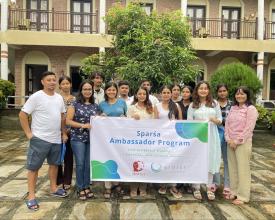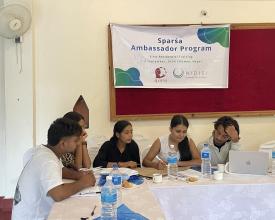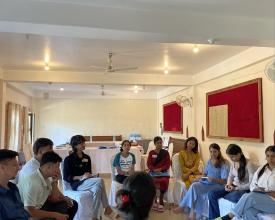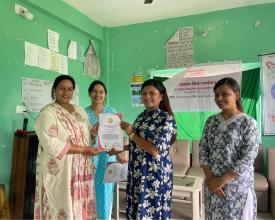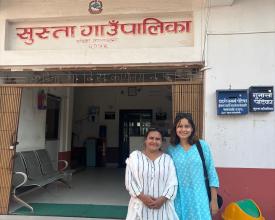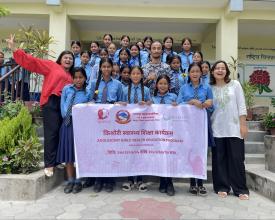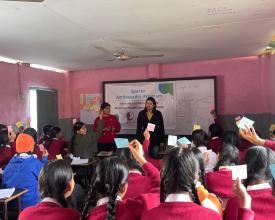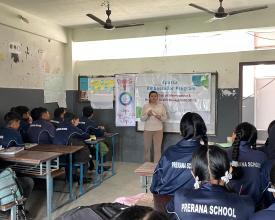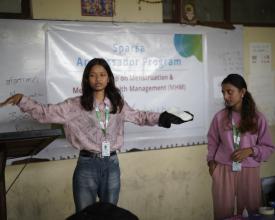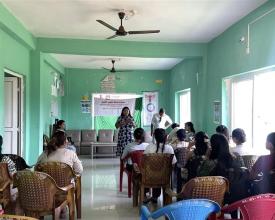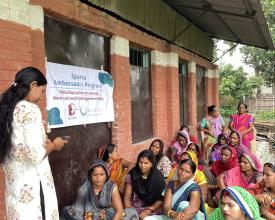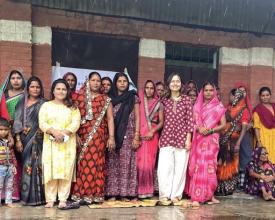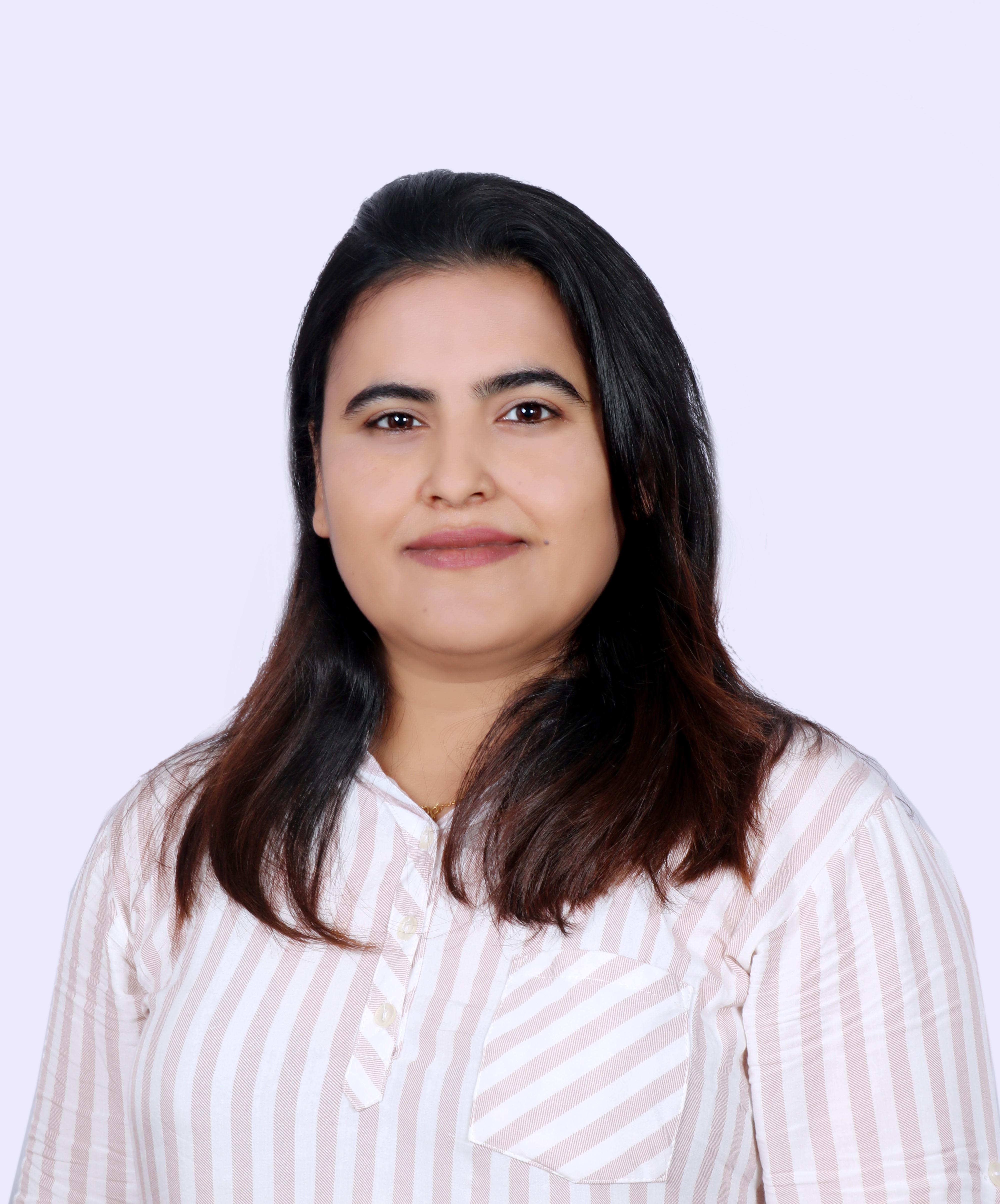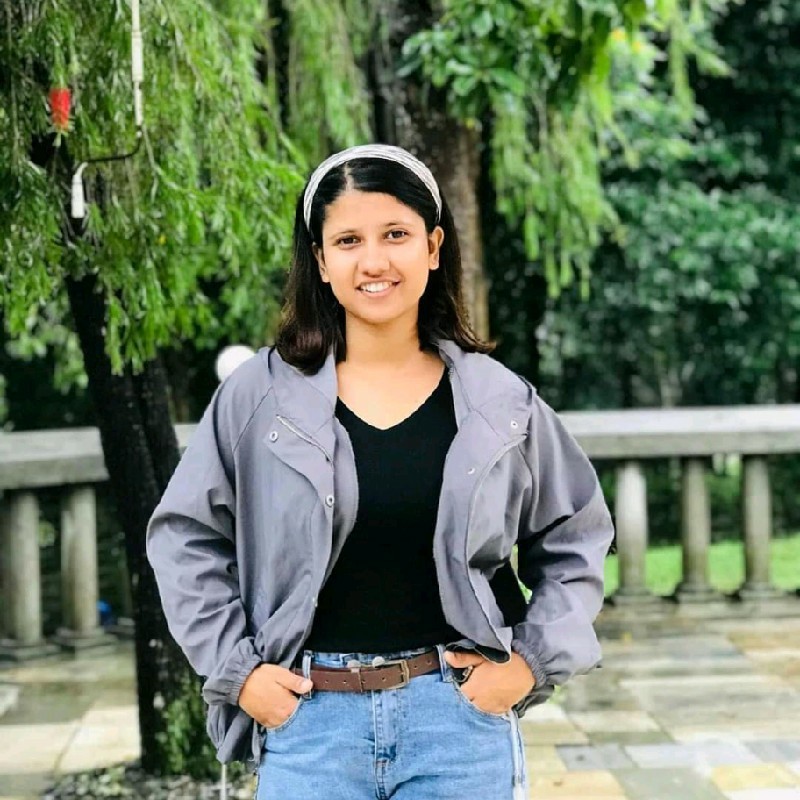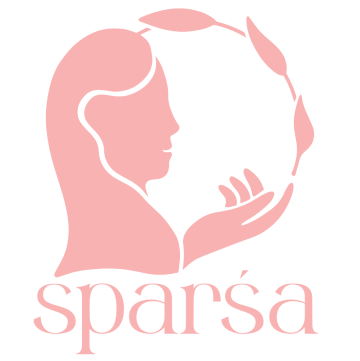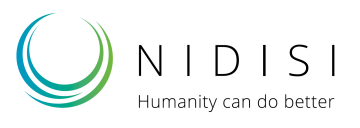
Sparśa Ambassador Program: Youth-Led Menstrual Health Education and Stigma Reduction in Nepal

This initiative is part of the Sparsa Solution, a Nepali non-profit organization that locally produces and distributes compostable menstrual pads with an absorbent core made from banana fiber. The Sparśa Ambassador Program trains young community members to deliver culturally sensitive menstrual health education in Chitwan, Nawalpur East, and Nawalpur West. Ambassadors—both male and female—are selected from their own communities and trained in MHM, SRHR, facilitation, and leadership. They design age-appropriate sessions for schools, using interactive activities, product demonstrations, and environmental messaging, and run dialogue-based discussions for adults to address myths, stigma, and sustainable product choices. Strong partnerships with schools, NGOs, and local authorities ensure legitimacy and reach. By combining youth leadership, tailored education, and local engagement, the programme improves knowledge, reduces stigma, promotes gender equality, and supports a shift toward eco-friendly menstrual products.
Context
Challenges addressed
- Social – Menstruation remains a sensitive and often taboo subject in many rural Nepali communities. Deep-rooted myths and restrictive practices limit open discussion, hinder knowledge-sharing between generations, and perpetuate stigma for both girls and women.
- Institutional – Accessing schools and community venues requires navigating multiple layers of approval from local authorities, principals, and community leaders, each with their own protocols and timelines.
- Capacity – Many motivated young people lack prior experience in public speaking, facilitation, or SRHR topics, making comprehensive, practice-oriented training essential.
- Environmental Awareness – Plastic-based disposable pads dominate the market, while knowledge about compostable or reusable alternatives—and their environmental benefits—remains low.
Location
Process
Summary of the process
The program begins by recruiting Ambassadors from the target communities, ensuring cultural and linguistic relevance. They undergo intensive residential training in SRHR, facilitation, leadership, and product knowledge, followed by mock sessions in local schools.
Ambassadors then engage key actors—ward offices, municipalities, NGOs, schools, and community leaders—to secure permissions, arrange venues, and integrate with existing local initiatives. Sessions in schools are tailored by age group: younger students engage through art, games, and storytelling; older students receive more detailed scientific and practical information. All sessions include inclusive participation of both boys and girls, product demonstrations, and environmental messaging.
Community sessions for adults use dialogue-based formats to surface existing beliefs and practices, address misinformation, and build trust. Follow-ups are encouraged to reinforce learning and encourage long-term attitude change.
Regular mentorship, peer support networks, and feedback loops help sustain Ambassador motivation, improve content delivery, and adapt strategies to emerging needs.
Building Blocks
Creating a Network of Young Educators (Sparśa Ambassadors)
This building block establishes a community-rooted network of trained young educators—known as Ambassadors—who lead awareness sessions on menstruation within their own local contexts. The approach addresses the widespread lack of accurate menstrual health information among both schoolchildren and adults by using peer-led, relatable education.
Ambassadors are selected from diverse communities across Chitwan, Nawalpur East, and Nawalpur West, ensuring cultural, linguistic, and contextual relevance. Both male and female Ambassadors are recruited to promote shared responsibility for breaking menstrual stigma.
Before field implementation, Ambassadors conduct community and school mapping to design session content tailored to local needs and beliefs. They participate in intensive residential training on menstruation, SRHR, facilitation, and leadership, followed by mock sessions in local schools. They also form peer support groups—through WhatsApp, weekly calls, and shared online documents—to coordinate, co-create sessions, and sustain motivation.
The programme prioritises both external impact and the personal and professional development of Ambassadors, fostering the next generation of community leaders and advocates for menstrual health. Regular check-ins, planning meetings, and progress updates keep the network active, responsive, and accountable.
Enabling factors
- Community-Centric Recruitment – Select Ambassadors from their own communities to ensure trust, cultural sensitivity, and relevance. Partner with schools, youth clubs, and women’s groups for recruitment. Use a short application process to assess motivation, availability, and community involvement.
- Inclusive Gender Representation – Engage both men and women to foster shared responsibility in menstrual health education.
- Flexible Training Design – Combine a pre-designed curriculum with space for Ambassadors to adapt content based on mapping results and local taboos.
- Interactive Training Methods – Use role plays, group discussions, and games to make sessions participatory. Include culturally relevant examples and a “train-the-trainer” component so Ambassadors can cascade their learning.
- Skilled Facilitation – Involve expert trainers in SRHR, facilitation, and leadership to build strong knowledge and confidence.
- Pre-Deployment Preparation – Run practice workshops and mock sessions before fieldwork to refine delivery.
- Ongoing Mentorship – Provide regular guidance, peer support groups, and group reflection sessions to sustain engagement.
- Integration with Local Services – Link Ambassadors to health centres and school staff for referrals and continuity of education after the project.
Lesson learned
- Recruiting passionate youth works well, but including candidates with SRHR or public health backgrounds adds extra value. Take time with selection to ensure long-term commitment.
- A 3-day residential training proved too short; a week-long bootcamp allows deeper learning, stronger bonding, and practical application.
- Many Ambassadors dropped out due to low motivation or personal commitments. Regular in-person or hybrid check-ins, accessible communication channels (including offline), and incentives such as certificates or small stipends help retain them.
- Scheduling sessions at convenient times for target groups and separating sessions by age or gender when needed creates safer spaces for discussion.
- Combining menstrual health education with related topics like puberty, hygiene, or environmental impacts broadens relevance and engagement.
- Post-session feedback forms and monthly peer meetings help track progress, identify challenges, and share solutions.
- Partnering with local institutions early ensures credibility and smoother access to schools and community venues.
Engaging Key Actors for Menstrual Health Outreach
This building block outlines how to identify, engage, and collaborate with the local actors who enable smooth implementation and long-term sustainability of the SPARŚA Ambassador Program. These include local authorities, community leaders, partner NGOs, school administrations, and ward-level representatives. Establishing trust with these stakeholders ensures legitimacy, secures support for sessions, and opens opportunities for collaboration, resource-sharing, and broader community engagement.
Ambassadors begin by mapping key decision-makers in their area, including ward officers, municipal representatives, and respected community figures. Early face-to-face meetings secure permissions and build goodwill. These contacts often connect Ambassadors to existing programmes and community groups such as Ama Samuha, Mahila Samuha, Tole Sudhar Samiti, and Users Committees, which can help mobilise participants and spread awareness.
Partner NGOs are engaged before training begins, contributing to co-designing content, sourcing expert trainers, and sharing proven materials like Ruby’s World from WASH United, NFCC toolkits, and GYAN resources.
When engaging schools, Ambassadors prioritise in-person visits to principals over emails or calls, respecting local norms and increasing the likelihood of acceptance. Flexibility is essential to handle last-minute changes or rejections. Principals play a key role in organising logistics, allocating time slots, and ensuring student and teacher participation.
Formal documentation—letters with organisational stamps and signatures—builds credibility and reassures institutions. Understanding local protocols is vital, as some districts require additional approvals from higher authorities.
Enabling factors
- Stakeholder Mapping – Identify key decision-makers, influencers, and active community groups before implementation.
- Early Government Engagement – Meet ward officers, municipal representatives, and community leaders early to secure approvals and explore synergies with local initiatives.
- Strong NGO Partnerships – Collaborate with NGOs during programme design to access trainers, co-create content, and leverage their networks.
- Proactive School Engagement – Rely on direct, face-to-face communication with principals for smoother scheduling and logistical coordination.
- Local Champions – Enlist respected individuals to introduce Ambassadors and vouch for their work.
- Formal Documentation – Prepare stamped, signed letters to formalise agreements and avoid administrative delays.
- Protocol Awareness – Understand and comply with administrative processes unique to each district.
Lesson learned
- In-person engagement is far more effective than remote outreach when working with schools and communities in rural Nepal.
- Formal procedures, including official letters and stamps, are essential for credibility and often a precondition for access.
- Flexibility is key; session dates may change, and having backup options prevents disruption.
- Maintaining warm relationships with stakeholders through updates and acknowledgements builds long-term trust.
- Aligning Ambassador activities with existing health or education events increases efficiency and reach.
Designing and Delivering Age-Appropriate Menstrual Health Education for Schools
This building block details how the SPARŚA Ambassador Program designs and delivers menstrual health education for students aged 11–17 (Grades 6–10) in Nepal, ensuring each session is relevant, inclusive, and culturally sensitive.
Schools are chosen based on their proximity to the Ambassador’s community to ensure trust and easy access. Ambassadors map their audience and adapt delivery methods to different age groups. For Grades 6–7 (pre-menarche), sessions focus on building a safe and friendly environment through storytelling, interactive games, and art-based activities. For Grades 8–10 (post-menarche), the focus shifts to clear scientific explanations of the menstrual cycle, phases, and bodily changes, while also addressing myths, stigma, and gaps left by incomplete classroom teaching.
Visual aids such as flip charts, diagrams, presentations, and flex prints help make abstract concepts tangible. Ambassadors also conduct live demonstrations of various menstrual products—disposable pads, reusable cloth pads, menstrual cups, and tampons—explaining pros and cons, safe usage, disposal methods, and environmental impacts. By linking product choice to environmental awareness, students learn how menstrual health intersects with climate action.
Nutrition during menstruation is covered to promote physical well-being. Sessions are always inclusive of both boys and girls, which helps normalise menstruation, reduce stigma, and foster empathy among peers. Teachers are encouraged to attend so they can reinforce messages after the session.
Preparation is key: Ambassadors contact school principals early, establish ground rules for respectful participation, prepare teaching materials, arrange transportation, and ensure all demonstration products are ready. Follow-up is encouraged through take-home leaflets or posters, allowing students to revisit the information later.
Enabling factors
- Audience Segmentation – Adapt activities for pre- and post-menarche students to match their needs and comfort levels.
- Interactive, Hands-On Learning – Use visual aids, role plays, and product demonstrations to engage multiple learning styles.
- Safe Participation Rules – Start sessions with simple agreements on respect and confidentiality to encourage open dialogue.
- Proactive School Engagement – Approach principals in person to secure support, time slots, and teacher involvement.
- Environmental Integration – Include information on how different products affect waste and climate, fostering both health and environmental responsibility.
- Teacher Involvement – Invite teachers to join the sessions so they can continue the conversation afterwards.
- Follow-Up Materials – Provide schools with leaflets or posters to reinforce key messages after the session.
Lesson learned
- Younger students respond best to fun, artistic, and emotionally safe methods, while older students value factual clarity and practical detail.
- Demonstrating products physically breaks down stigma and makes menstrual care relatable, especially in rural or high-stigma settings.
- Including boys in the sessions reduces teasing and builds peer support for menstruating students.
- Teacher involvement greatly increases the sustainability of knowledge transfer.
- Careful preparation, including early material requests and transport planning, ensures smooth delivery.
Facilitating Inclusive and Dialogue-Based Menstrual Health Sessions for Community Adults
This building block outlines how the SPARŚA Ambassador Program engages adult community members in open, respectful, and evidence-based discussions on menstruation. The approach prioritises dialogue over lecture, creating a space where participants can share their beliefs, practices, and lived experiences, while also receiving accurate information.
Target groups are identified by Ambassadors themselves or in collaboration with ward offices, municipalities, or metropolitan authorities. These often include mothers’ groups, women’s collectives, youth clubs, and mixed community gatherings. Trusted groups like Ama Samuha or Tole Sudhar Samiti are engaged early to help mobilise participants and endorse the sessions, which greatly enhances credibility and attendance.
Sessions are adapted to the context and needs of adults. Rather than delivering the same content as in schools, Ambassadors focus on myth-busting, stigma reduction, and practical menstrual health knowledge. This includes clarifying biological facts, discussing hygienic practices, exploring environmentally friendly menstrual products, and addressing social norms that restrict women’s and girls’ mobility, participation, or dignity during menstruation.
Ambassadors begin by establishing safe space agreements and inviting participants to share their own perspectives through Focus Group Discussion (FGD). The facilitator listens actively, acknowledges local knowledge, and then uses visual aids, product demonstrations, and relatable stories to fill knowledge gaps or correct misinformation. Nutrition and self-care during menstruation are also discussed, linking health to overall well-being.
Preparation is thorough: Ambassadors coordinate with the programme team for materials, set session dates with local leaders, arrange venues in accessible and comfortable locations, and ensure a variety of menstrual products are available for demonstration. Follow-up visits or recurring discussions are encouraged to reinforce learning and track changes in attitudes.
Enabling factors
- Collaboration with Trusted Local Actors – Engage ward officers, community leaders, and women’s groups early to gain trust and support mobilisation.
- Safe and Respectful Dialogue – Begin each session by setting participation rules that promote open, non-judgmental sharing.
- Active Listening – Spend more time listening than speaking, allowing participants to voice their experiences and questions before introducing new information.
- Tailored Content – Adapt materials and examples to the cultural and generational context of the group.
- Hands-On Product Demonstrations – Show different menstrual products, explain pros and cons, and address environmental impacts to support informed choice.
- Logistical Planning – Choose venues that are private, comfortable, and easily accessible for the target audience. Ensure all materials and visual aids are ready in advance.
- Follow-Up Engagement – Schedule recurring visits or link participants to ongoing programmes for sustained learning.
Lesson learned
- A single session rarely shifts deep-rooted norms; regular follow-up strengthens retention and attitude change.
- Listening respectfully and without judgment encourages participants to share honestly, which opens the door to correcting misinformation.
- Local leaders and women’s groups are key allies in building trust and mobilising attendance.
- Myths and taboos are often deeply personal; facilitators need patience and cultural sensitivity to address them effectively.
- Product demonstrations and environmental discussions help bridge the gap between abstract health messages and practical, daily life decisions.
Impacts
- Social – 20 Ambassadors trained; 70+ schools reached; 7500 students and 1500 community members engaged in stigma-reduction sessions (within first 12 months of program operation). Inclusion of boys has fostered more supportive school environments.
- Economic – Ambassadors gain skills in facilitation, leadership, and SRHR content delivery, enhancing future employment opportunities. Product knowledge sessions create informed demand for sustainable menstrual products.
- Environmental – Product demonstrations and environmental education promote a shift from plastic-based to compostable menstrual products, supporting waste reduction and climate-conscious choices.
Beneficiaries
- Direct – Youth Ambassadors, school students (both boys and girls), adult community members, women’s groups, and schoolteachers.
- Indirect – Local health workers, NGOs, and government units benefiting from strengthened community engagement and menstrual health a
Global Biodiversity Framework (GBF)
Sustainable Development Goals
Story
Sandhya Kumari Kurmi, one of our Ambassadors, comes from Susta in Nawalparasi – a region where conversations about menstruation are almost nonexistent and opportunities for young women are limited. Just deciding to step out of her community and join a program that asked her to speak about menstruation was already an act of courage.
At the beginning, Sandhya was shy and uncertain. It was her first time traveling alone outside her village, and she leaned on a close friend to co-facilitate the first menstrual health sessions. Standing in front of a classroom where students laughed at her demonstrations was daunting. But Sandhya did not give up. Through the Ambassador training, she built new knowledge and confidence, and when her friend later had to leave the village, Sandhya decided to continue on her own.
She began approaching school principals, local stakeholders, and even municipal authorities to seek permission to hold sessions. Slowly, she grew into a strong public speaker, able to lead discussions with clarity and pride. Where students once giggled at her, they now listened attentively, asked questions, and felt motivated to learn. One day, a young girl quietly approached her after class, too shy to speak in public but trusting Sandhya enough to ask for advice about her menstruation. For Sandhya, this was proof that she was no longer just speaking—she was making a difference.
Sandhya has since expanded her work beyond schools. She now organizes and leads community sessions with women in Susta, openly discussing periods and breaking deep-seated taboos. Many women who once relied on ash wrapped in cloth have shifted to safer, healthier menstrual practices thanks to her awareness sessions. Seeing these tangible changes has filled Sandhya with pride and purpose. Inspired by her journey as an Ambassador, she is now pursuing a bachelor’s degree in public health.
Sandhya’s story embodies the heart of the Ambassador Program: empowering local youth to challenge stigma, change practices, and build healthier futures in their own communities.


